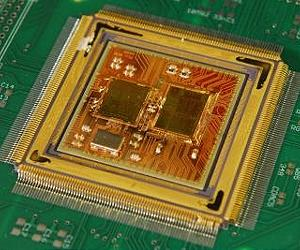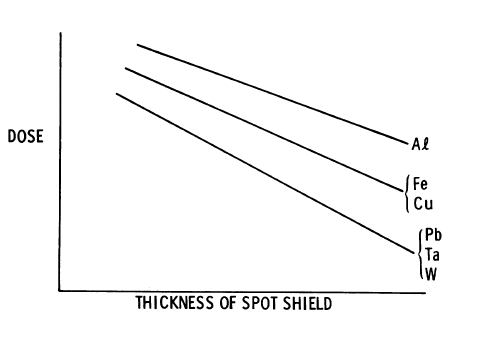Radiation Hardening
In a mission of such duration and expense, the failure of electronic components would be disastrous. Thus, despite the added weight and expense, many types of precautions should be taken. Recent research into silicon-germanium based circuits has shown that such materials can provide good resistance to cosmic radiation, including heavy ions. Silicon germanium based circuitry has been tested and verified to perform very well in environments from +120 C to -180 C. [1]

Figure 1. "This close-up image shows a remote electronics unit 16-channel sensor interface, developed for NASA using silicon-germanium microchips by an 11-member team led by Georgia Tech. Credit: Gary Meek." [1]
Since this mission will traverse deep space, the temperatures the probe will experience will exceed the -180 C lower limit of this technology's testing. Thus, it is necessary to contain the electronic components in insulated (and shielded) spaces of the craft so that they may be heated to within the known operating temperatures of the equipment, possibly by the use of radioisotope thermoelectric generator heating units.[2]
Though it has been stated that SiGe technology allows good resistance to radiation, it is also suggested that supplementary metal spot-shielding (possibly of cungsten, copper or aluminium, depending on weight and budget) be added to sensitive areas of the spacecraft (such as the communications system FPGA and other processing units, which may be especially prone to failure) to provide extra protection. Care should also be taken in shielding the cabling between shielded components to minimize induced currents in the cabling.[3]

Figure 2. A typical dose vs shield thickness at a specific spacecraft location (different shield materials).[3]
On a mission of such length, triple modular redundancy of as many components as possible is also suggested. Triple modular redundancy provides extra systems in case of failure and also error checking.[4] Though this adds weight, complexity, and therefore expense, the added protection from failure outweighs cost. ECC RAM should also be used, as well as a watchdog timer. The watchdog timer checks critical systems for correct operation and resets them if the systems are found to be unresponsive.[3]
It should also be mentioned that the added weight of shielding and redundant elements will not be as much of an issue if the spacecraft is constructed in space as proposed. The probe will not need to meet a minimum single-launch weight.
An exhaustive discussion of radiation levels is not conducted here because it is beyond the scope of this proposal. In addition, not much data is currently available concerning expected radiation levels during transit or upon arrival. This would need to be determined before the final mission trajectory is decided upon.
References
1.
Silicon Germanium For Space Electronics Applications.
2. R. R. Furlong and E. J. Wahlquist, "U.S. space missions using radioisotope power systems," Nuclear News, Apr, 1999.
3. F. L. Bouquet and E. F. Koprowski, "Radiation Design Considerations For Advanced Jupiter Spacecraft," IEEE Trans. Nucl. Sci., vol. 26, no. 6, pp. 5168-5174, Dec., 1979
4. Space Proofing.